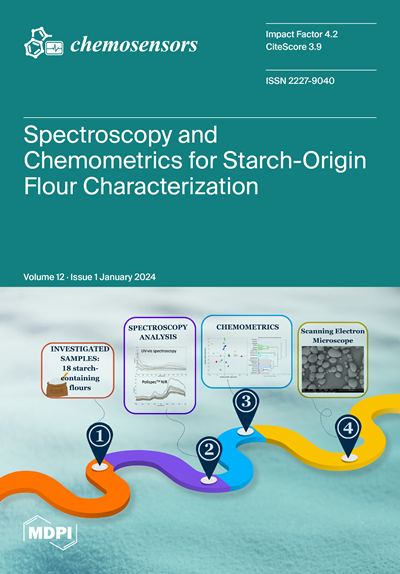以化学阻性气体传感器为重点的癌症检测气体传感器综述
IF 3.7
3区 工程技术
Q2 CHEMISTRY, ANALYTICAL
引用次数: 0
摘要
检测和识别气体的必要性在许多研究和应用领域都是至关重要的,在过去的几年里,它们的技术不断发展。气体传感器的基本检测原理依赖于将气体浓度变化转换为可读信号,可以分析该信号以校准传感器以检测特定气体或混合物。这里详细介绍了各种各样的气体传感器类型,以及它们的基本特征和功能原理的准确描述,并根据它们的工作机制(电化学、谐振、光学、化学电阻、电容和催化)进行了分类。本综述特别关注化学电阻传感器,其电阻因气体和传感器表面之间的化学反应而变化,并且,我们特别关注我们开发的传感器及其在医疗领域的应用,作为该技术向医学转移的一个例子。如今,化学电阻传感器实际上是实施肿瘤(全球第二大死亡原因,约900万人死亡)和其他病理筛查和监测设备的有力候选者,具有良好的未来前景,并简要讨论。本文章由计算机程序翻译,如有差异,请以英文原文为准。
Overview of Gas Sensors Focusing on Chemoresistive Ones for Cancer Detection
The necessity of detecting and recognizing gases is crucial in many research and application fields, boosting, in the last years, their continuously evolving technology. The basic detection principle of gas sensors relies on the conversion of gas concentration changes into a readable signal that can be analyzed to calibrate sensors to detect specific gases or mixtures. The large variety of gas sensor types is here examined in detail, along with an accurate description of their fundamental characteristics and functioning principles, classified based on their working mechanisms (electrochemical, resonant, optical, chemoresistive, capacitive, and catalytic). This review is particularly focused on chemoresistive sensors, whose electrical resistance changes because of chemical reactions between the gas and the sensor surface, and, in particular, we focus on the ones developed by us and their applications in the medical field as an example of the technological transfer of this technology to medicine. Nowadays, chemoresistive sensors are, in fact, strong candidates for the implementation of devices for the screening and monitoring of tumors (the second worldwide cause of death, with ~9 million deaths) and other pathologies, with promising future perspectives that are briefly discussed as well.
求助全文
通过发布文献求助,成功后即可免费获取论文全文。
去求助
来源期刊

Chemosensors
Chemistry-Analytical Chemistry
CiteScore
5.00
自引率
9.50%
发文量
450
审稿时长
11 weeks
期刊介绍:
Chemosensors (ISSN 2227-9040; CODEN: CHEMO9) is an international, scientific, open access journal on the science and technology of chemical sensors published quarterly online by MDPI.The journal is indexed in Scopus, SCIE (Web of Science), CAPlus / SciFinder, Inspec, Engineering Village and other databases.
 求助内容:
求助内容: 应助结果提醒方式:
应助结果提醒方式:


